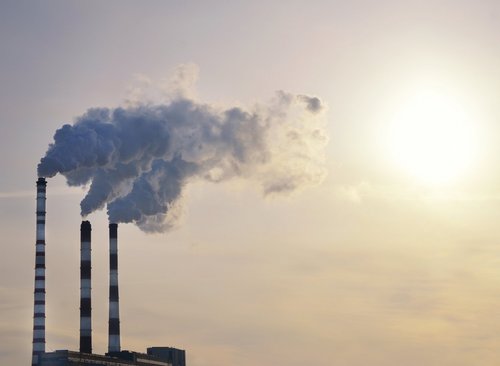Emissions trading at the European level has brought about great benefits for climate protection. That is why it should be promoted rather than distorted by way of national measures.

Emissions trading: An effective instrument
Since 2005, the EU Emissions Trading System (ETS) has been regulating the emission of greenhouse gases by placing a cap on the volume of emissions produced by energy supply systems and energy-intensive industries, and by reducing this volume each year. For every tonne of CO2 produced, the plant operator has to buy a carbon credit. Based on the price of the carbon credit, companies decide where it is worth reducing emissions. This enables them to achieve the specified target with the least possible expense.
In this manner, by the year 2020, greenhouse gas emissions throughout Europe are to be reduced from their 2005 levels by 21 per cent. Part of Germany’s emissions have long been regulated at the EU level. But the federal government has also set its own climate protection target, which includes the CO2 volume levels specified by the ETS.
These national measures are more expensive, however, and have very little impact on climate protection. After all, every additional tonne of CO2 that is saved is cancelled out again by carbon credits that become available elsewhere in Europe.
Examples of such a double regulation can especially be seen where lawmakers attempt to influence energy production and consumption. Billions are being spent on the funding of renewable energies. And the joint production of electricity and heat is also being subsidised.
Many of these instruments are not primarily focussed on climate protection. Rather, they serve to promote certain technologies – or simply for the government to take in more funds.
On the long term, however, it should be the CO2 price alone that helps clean and efficient technologies remain competitive and widely applicable.
This is all the more valid as the impact of the ETS incentives becomes increasingly visible, including in Germany. In the last ten years, the plants participating in emissions trading have decreased their greenhouse gas emissions by 12 per cent. The industries that are not active in emissions trading are also seeing some improvements, but not at the same pace (see chart).
Hence, national climate policy should focus primarily on areas that are not participating in the ETS – such as the heating and transportation sectors. At the same time, emissions trading must increasingly be used as a guiding instrument for climate protection.
More on the topic
![[Translate to English:] Das Gebäude des Weißen Hauses in Washington, D.C. in den Vereinigten Staaten von Amerika. [Translate to English:] Das Gebäude des Weißen Hauses in Washington, D.C. in den Vereinigten Staaten von Amerika.](/fileadmin/_processed_/c/1/csm_GettyImages-2161499385_White_House_Editorial_884306add8.jpg)
Trump or Harris or ...? What Europe must prepare for
A few months before the presidential election in the USA, Donald Trump has a good chance of being re-elected. On the Democratic side, the incumbent president has withdrawn his candidacy after a long period of hesitation, while Vice President Kamala Harris is ...
IW
Compendium 5.5: CO2 Regulation of Road Transport in Europe
With the Compendium CO2 Regulation in Europe, the IW has been providing the interested public with a comprehensive collection of data on the development of CO2 emissions from passenger car traffic in the European Union, as well as on the applicable regulatory ...
IW